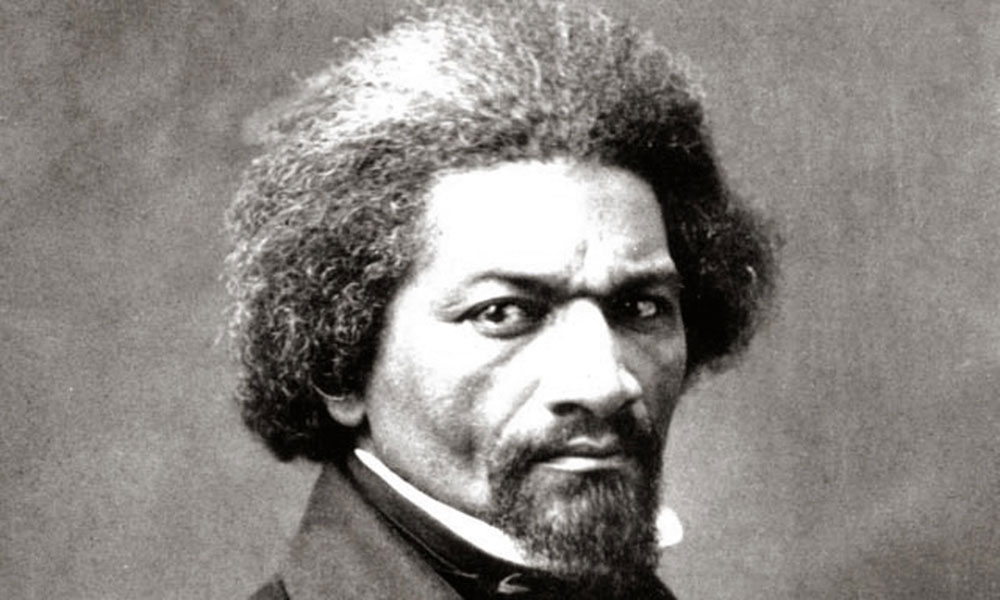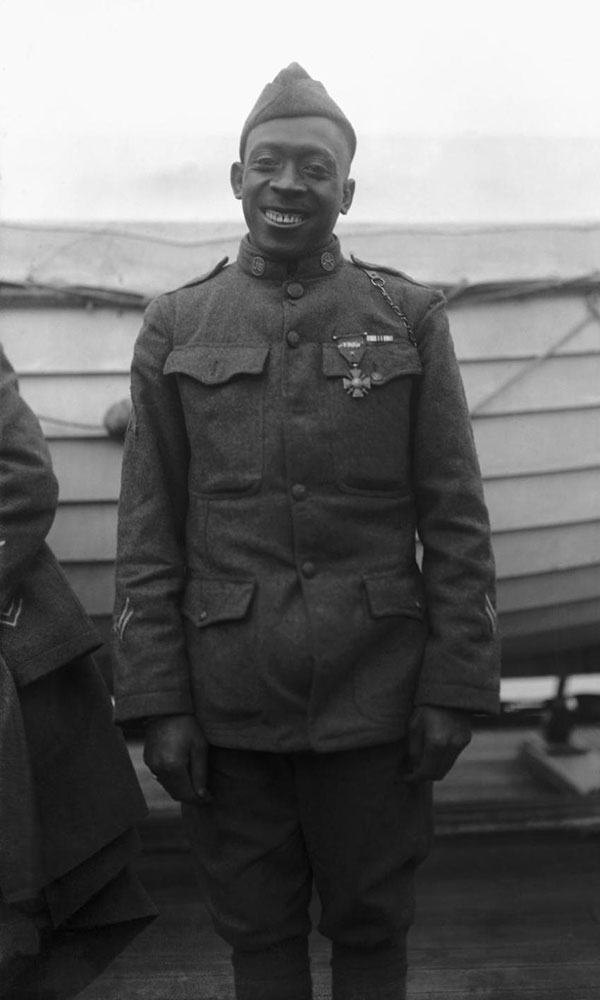African American History Month has always been a personally significant time for me, because I grew up just outside of Birmingham, AL, one of the focal points of the Civil Rights Movement in the 1960s. In high school, I remember reading and being moved by Dr. Martin Luther King Jr.’s groundbreaking Letter from a Birmingham Jail. And during my first semester at Birmingham-Southern College, the only required reading for orientation was Four Spirits by Alabama author Sena Jeter Naslund, a novel about the infamous bombing of the 16th Street Baptist Church, which generated national support for the passage of the Civil Rights Act of 1964. It all happened right there where I grew up; I was surrounded by African-American history.
Then, when I first moved to the Capital Region, I remember reading about Saratoga’s pivotal role in the American Revolution and just being amazed at how much history there was in the area. I had no idea about its close connection to African-American history. In fact, the Capital Region had played a pivotal role in leading thousands of African Americans to freedom through routes along the Underground Railroad. But that was just the tip of the iceberg. If you dig deep enough, you’ll find that this area has many amazing connections to African-American history, too.
In honor of African American History Month, saratoga living has created a list of seven incredible African-American figures, all of whom have Capital Region connections, and ended up making their mark on the nation as a whole.
(1) Agrippa Hull
The American Revolution’s Battle of Saratoga saw 300-400 African-American soldiers fight alongside white soldiers in integrated units. Following the revolution, the US wouldn’t see integrated units again until the US Army made them official more than 150 years later. One of the soldiers who witnessed the English surrender after the Battle of Saratoga was Agrippa Hull. Born free in Northampton, MA, Hull lived a long and fascinating life. At just 18, he enlisted in the newly formed Continental Army and was soon made assistant to Thaddeus Kosciusko, the esteemed Polish military engineer and architect of the Continental Army’s victory at the Battle of Saratoga. Hull and Kosciusko became close, turning Kosciusko into a lifelong abolitionist. Over the next six years, Hull would be Kosciusko’s right-hand man in many of the most important engagements during the American Revolution. At the end of the war, Hull had his discharge papers signed at West Point by General George Washington himself.
(2) Solomon Northup
More than 150 years after it was first published, Solomon Northup’s harrowing memoir, 12 Years a Slave, was made into an Academy Award-winning film of the same name in 2013, hoisting the book out of relative obscurity to international acclaim. Born free in Minerva, NY, Solomon Northup was a professional violinist and farmer, who moved to Saratoga Springs in the 1830s to look for more work as a musician. In 1841, two men approached Northup on Broadway and offered him wages in a traveling musical show heading down to New York City and then Washington, DC. However, once in DC, the two men drugged Northup and sold him into slavery. Northup spent the next 12 years in bondage on plantations in Louisiana before finally being found and rescued by Henry B. Northup, a member of the white family that had owned and freed Solomon’s father. In 1853, immediately upon making it back home, Solomon wrote and published his memoir, 12 Years a Slave, in part, to bring his kidnappers to justice. Though the two men, Alexander Merrill and Joseph Russell, were arrested for the crime, neither was convicted. In 2002, in honor of Northup and his achievements, Saratoga officially made the third Saturday in July “Solomon Northup Day.”

(3) Frederick Douglass
Douglass was born into slavery in Maryland and later escaped to freedom via the Underground Railroad, which in the early 19th century had a major route running through the Capital Region. After gaining his freedom and publishing The Life of Frederick Douglass in 1845, a combination autobiography, slave narrative and abolitionist treatise, Douglass visited Albany for speaking engagements many times, including a large convention held in honor of the Emancipation Proclamation at Albany’s First Israel African Methodist Episcopal Church in 1863. While Douglass was abroad talking about his book, he entrusted his six-year-old daughter, Rosetta, to two Albany abolitionists, Lydia and Abigail Mott, who taught the young Rosetta reading, writing and sewing. Douglass even made his way up to Saratoga County a few times, including an 1849 speaking tour, which had on its itinerary Schuylerville, Quaker Springs and Dean’s Corners.
(4) Ella Robinson Madison
Born in Saratoga in 1854, Ella Robinson Madison was an early, influential African-American stage performer and singer, and a relative of Solomon Northup’s (Ella’s eldest sister, Victoria, was married to Northup’s son, Alonzo). In 1869, at the age of just 15, Madison relocated to New York City where she landed her first acting gig, auspiciously, at New York City’s Grand Opera House, playing the role of Topsy in Uncle Tom’s Cabin. Over the next 20 years, Madison toured extensively both in the US and in Europe, performing throughout the 1890s with banjo player and recording pioneer Charles Ashbury. Later in life, Madison experienced a career resurgence when she was cast as Annie in a play based on DuBose Heyward’s short novel, Porgy, about a crippled African-American beggar living in Charleston, SC. Madison even contributed an original scene to the play, part of a spontaneous collaboration between her and another actor. Porgy would later be adapted, serving as the inspiration for George Gershwin’s operatic masterpiece, Porgy & Bess.

(5) Henry Johnson
During World War I, the first American recipients of the Croix de Guerre, one of France’s highest military decorations, were two African-American soldiers, Needham Roberts of New Jersey and Robert Johnson, who, before the war, worked a number of jobs in Albany, including as a redcap porter at Union Station on Broadway. Both men were members of the 369th Infantry Regiment, better known by the name German soldiers gave them, the Hellfighters (or the Harlem Hellfighters, formerly known as the 15th New York National Guard Regiment). The unit served a total of 191 days in continuous combat on the front lines in France, more than any other American unit during the war. While on sentry duty one night in May 1918, Johnson and Needham singlehandedly fought off a raiding party of two dozen German soldiers, despite both men receiving serious wounds. Johnson’s heroic defense was reported on by the New York World and The Saturday Evening Post, bringing the former Albany porter international attention. Though denied the Purple Hurt within his lifetime, Johnson was posthumously awarded one in 1996 as well as a Medal of Honor in 2015.
(6) Wendell King
If you ever participated in college radio or just enjoy tuning into WSPN at Skidmore College, you owe a big debt to Wendell King, class of ’24. Born in Troy, King was a radio whiz when that technology was still fairly new to the country, creating one of the Capital Region’s first amateur radio stations from his home when he was just 12 years old. King is also credited with engineering the first-ever college radio station broadcast in the US, and it happened right here at Union College in Schenectady. As Union noted in an August 2017 post about King, “At 8 p.m. on Thursday, Oct. 14, 1920, Union’s student-operated radio station conducted a historic broadcast. Using a 150-watt transmitter from a studio in a shack behind the electrical engineering building with the antenna strung between two trees, the half-hour broadcast opened with tenor John Steel’s ‘Tell Me Little Gypsy.'”
(7) Bernice Johnson Reagon
Bernice Johnson Reagon played her first unaccompanied gig as a singer at Caffè Lena. Her second one? At the vaunted Carnegie Hall in Midtown Manhattan. Born in 1942 in Georgia, Reagon is best known as the founder and one of the singers of the Grammy-nominated African-American a cappella ensemble, Sweet Honey in the Rock. But before founding this supergroup of singers in 1973, Reagon was a student activist in Albany, GA and, after being suspended from college, found her way to Saratoga Springs where, for a time, she waited tables at Hattie’s Restaurant. One day, a regular customer heard Reagon humming while she worked and introduced her to Lena and Bill Spencer of Caffè Lena, who immediately gave her opportunities to perform at their club. One day, Reagon got a call at Lena’s from Bob Shelton of The New York Times who, coincidentally, had heard Reagon singing during mass meetings and protests down in Georgia. Soon after that, Reagon had a gig singing solo at Carnegie Hall, and in 1963, joined the Freedom Singers, an African-American student quartet that meshed gospel singing with protest songs. For their first national tour, the Freedom Singers performed in Albany, Schenectady and, of course, Saratoga at Caffè Lena.


